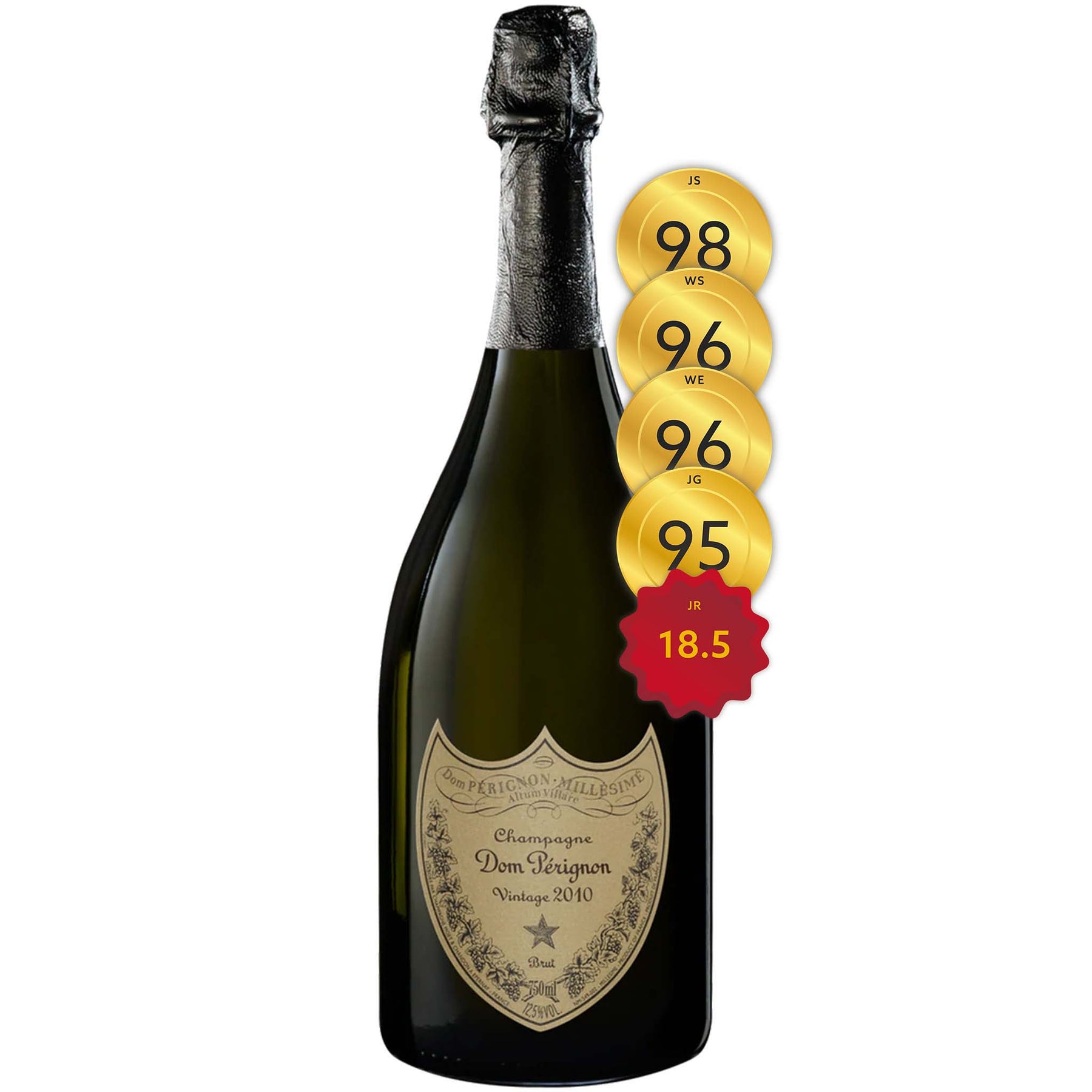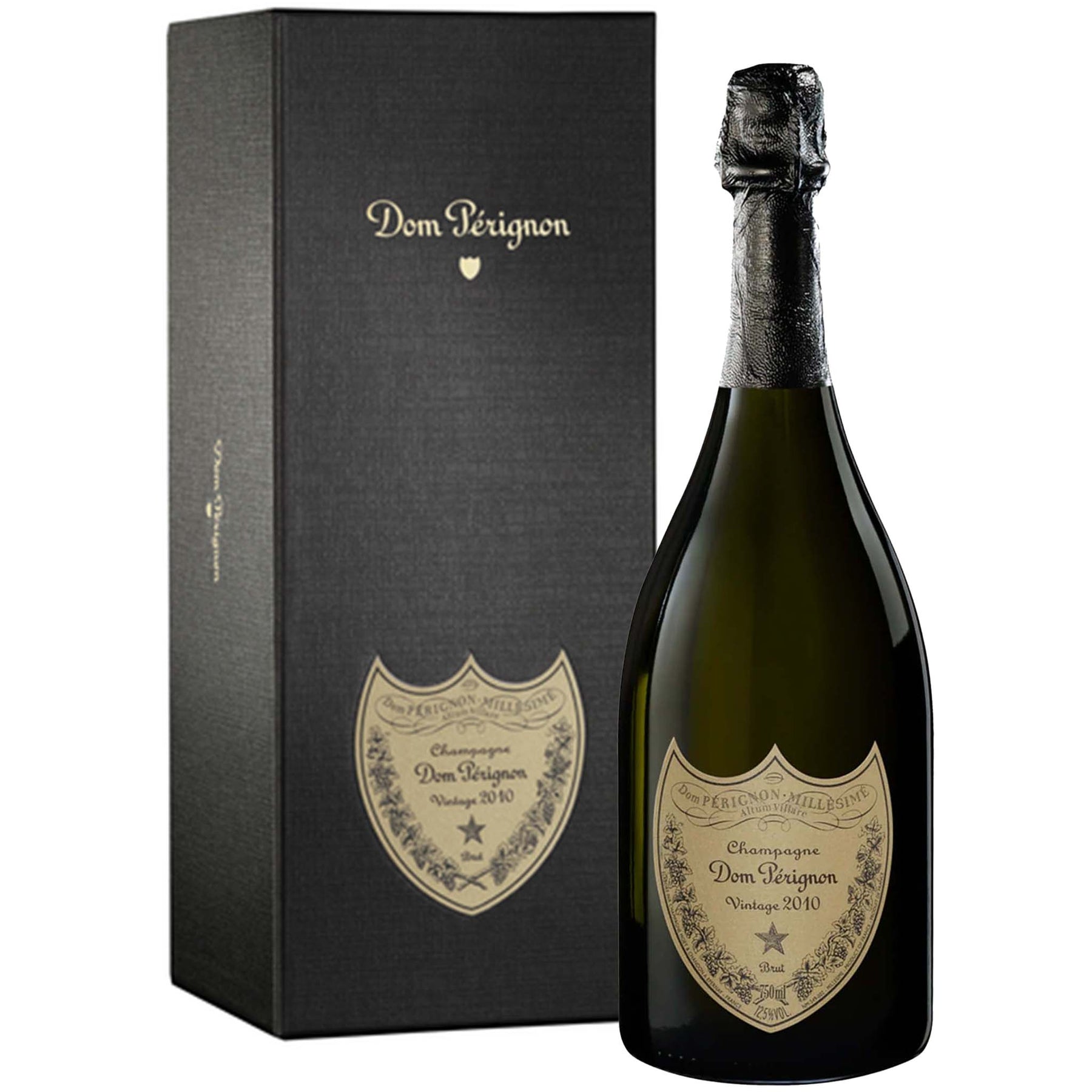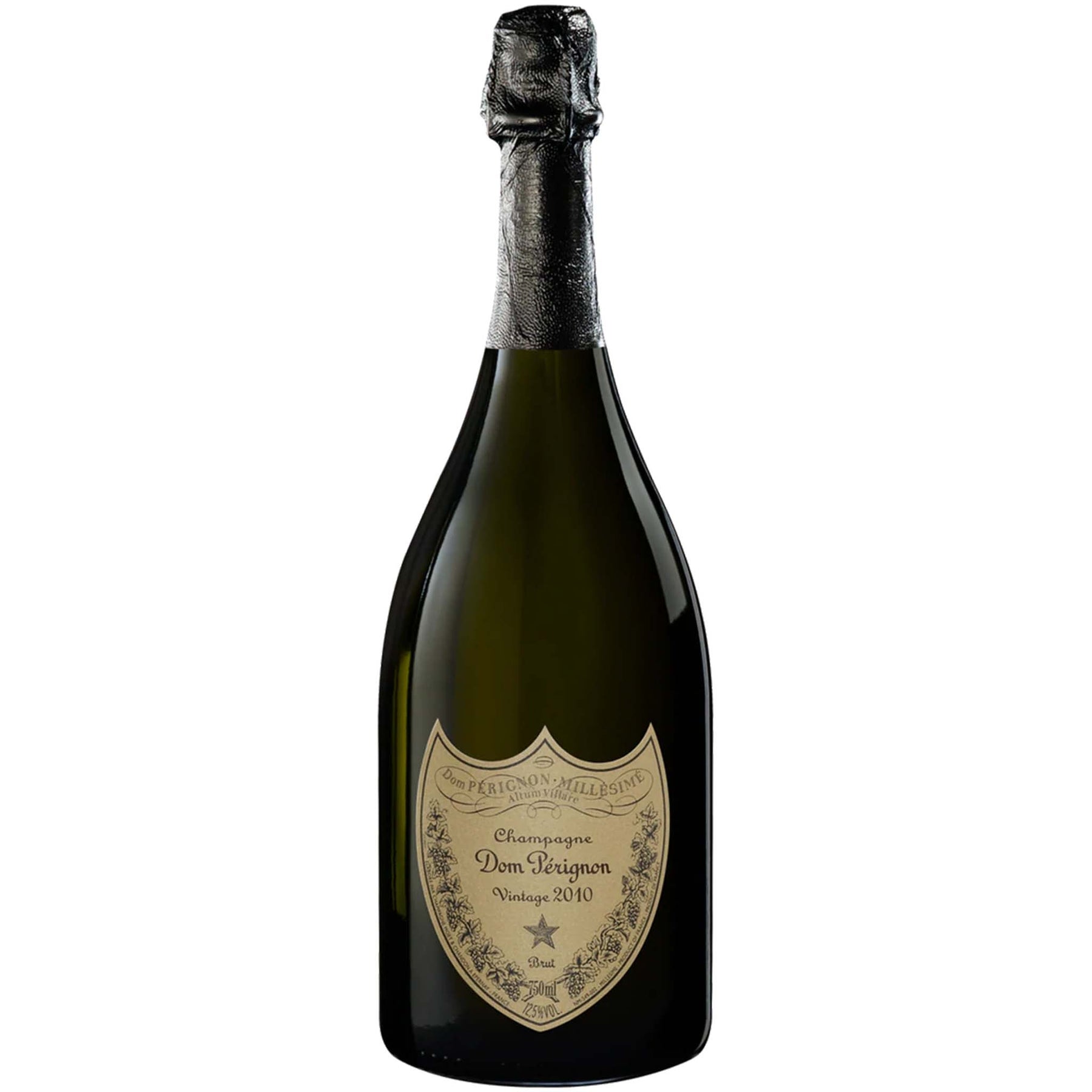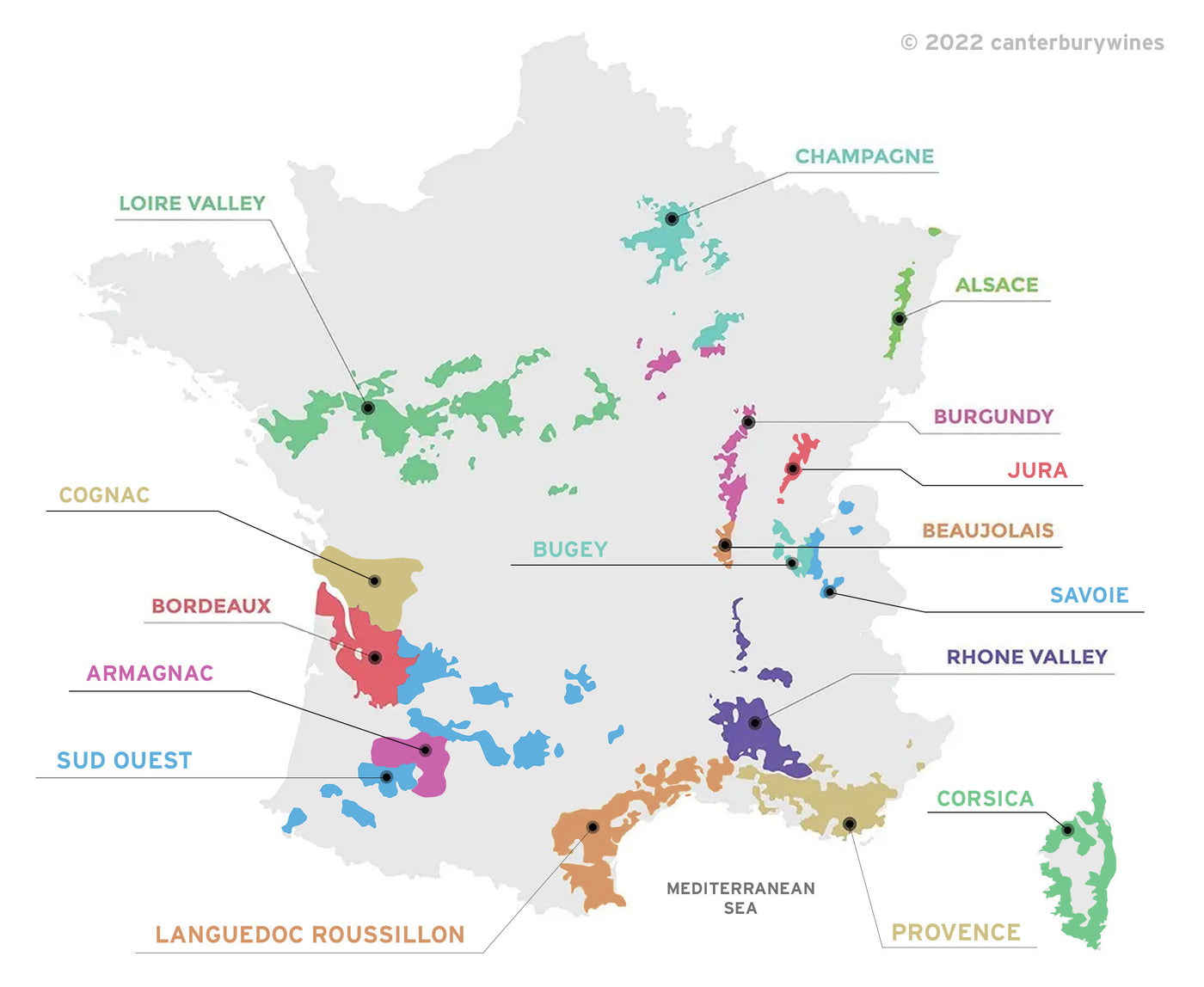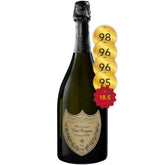Richard Geoffroy, Chef de Cave 1990-2018
For 28 years, from 1990 to the end of 2018, Richard Geoffroy was Dom Pérignon’s Chef de Cave. In that time as the creative guide of the Maison, he declared 15 vintages, the last being the majestic 2008 vintage. During that time he demonstrated an unwavering commitment to pursuing Dom Pérignon’s aesthetic ideal and vision. He believed that to experience Dom Pérignon fully, to understand it, one also needed to experience all the vintages that were made but not declared - which meant, effectively, that only he could understand it.
At the end of 2018, Richard Geoffroy passed the torch to his successor, Vincent Chaperon. Vincent had worked alongside Richard Geoffroy since he joined Dom Pérignon in 2005.
When asked what he had learned from working alongside his protégé for 13 years, Richard Geoffroy replied: "It’s very clear - his energy. Looking back, it’s very much the same energy I had when I came to Dom Pérignon in 1990. He’s given me a renewed energy. I’ve given him love, I’ve given him my energy, and he gives me that back. He’s allowed me to continue to grow, and to not become an old asshole. It’s the truth. It is important to recognize the risk of becoming an old asshole. That’s the worst! And the best way to do that is to learn from others. If you rest in your personal comfort zone, you’re dead. It’s the relationships you have in your inner circle that count the most. Vincent has considerable humanity, and to me that’s much more important than having technical skills. And that’s what the maison needs. We have incredible technicians. More than ever, with great and varied experience and expertise. But what we need is to be human, to not get cold or arrogant. We need to be warm, and that takes awareness and a lot of energy."
The following text is taken from an article by Essi Avellan MW published in 2015 in Flacons of Champagne magazine
Chef de Cave Richard Geoffroy is not playing it safe with Dom Pérignon. There is a formidable legacy to guard for the region's first prestige cuvée that carries the name of Champagne's most mythical figure. But instead of securing it, it is reinvention and pushing the boundaries that recur in Richard Geoffroy's deeds. He is obsessed with progression.
'If you are a defender, you are already a loser. To me the major pitfall of champagne is repetition, which is often done in the name of consistency', he states as we sit across each other at the ascetic and airy second floor tasting room at the abbey of Hautvillers, the ancient home of the monk Dom Pérignon. Exchanging over a flight of Dom Pérignons, I am rewarded with fireworks of his insightful and opinionated say.
'Dom Pérignon's greatest asset is vision', Richard Geoffroy decides. It is easy to agree with that, as vision is exactly what Geoffroy has demonstrated during his 25 years at the head of the house. Dom Pérignon has been a major driver of champagne, whose prestige and global presence benefit the entire region. Under Geoffroy's wing the Dom Pérignon brand has been separated from Moët & Chandon and its image has gradually been rejuvenated from classic to contemporary, even avant-garde.
The last 10 years have seen a notably more communicative Dom Pérignon. I remark to Geoffroy that the Dom Pérignon brand has become friendlier. And the same goes even with the wine with its increasingly welcoming, polished, and seamless character. Was this visioned? 'Dom Pérignon is all about pleasure and joy, emotions. I want it to embrace you', Geoffroy agrees. The multitude of research and development carried out at Moët & Chandon has benefited Dom Pérignon quality, too. A friend of a less technical way of talking about wine, Richard Geoffroy often sounds more like a poet than a winemaker: 'We pay a lot of attention to the texture and flow of the wine. I like to call it the Dom Pérignon glide, reminiscent of the surfer riding the perfect wave'.
Driven, is the word that epitomises Richard Geoffroy, the man whose greatest fear in life is to dry out or wither. Thus he declares to enjoy the excitement of discovery and loves surprises. 'That is something I also want to include in a bottle of Dom Pérignon', he adds. Richard Geoffroy's boldness in making Dom Pérignon has resulted in increasing number of vintages produced, including the record-breaking five vintages in a row from 2002 to 2006. He is not shy to demonstrate a broader scope of vintage expressions: 'I feel I might be taking more risks than my predecessors did. For instance, there is no 1989 whereas I made 2003'. He seemingly thrives on challenges and is most proud of the wines of the demanding vintages: 'Out of all vintages I have made, I take the greatest pride in our 2003 wines, which was an unforeseen vintage characterised by extreme heat.'
There is also an element of surprise in his career path, as even if he comes from a family of vine-growers in Champagne, winemaking was not his first choice. 'I love designing, building and creating things. I could've been an architect. At the end I chose medicine and passed my doctorate in 1982', He remembers. However, soon after his studies, Geoffroy felt a strong attraction back to his roots, to winemaking: 'I was already 31 when I went to study oenology in Reims.' Since then Richard Geoffroy's path has been highly successful and advancement rapid at LVMH. As a lot of creating and construction takes place when crafting champagne of this quality and quantity level, no doubt he is also drawing to his work from his other life interests: 'Dom Pérignon is the most blended vintage champagne. The more wines we combine, the more robust, detailed and precise the wine can be. Champagne making is an options game, and I love options', he confirms.
In addition to being able to work with the outstanding raw material and great technological resources, Richard Geoffroy has the most glamorous job in Champagne. He travels extensively to share Dom Pérignon with the jet set of the wine and gastronomic world as well as celebrities one can only dream to meet. In a world like his it would be easy to lose track of ordinary life. In his shoes many would have built an attitude of arrogance, but Geoffroy's feet stay firmly on the ground. 'I am privileged to get to meet so many exciting people. Dialogue and sharing are the greatest gifts. If my work would be just technical, I would be long gone.' Even if he still greatly enjoys his adventures abroad, the recent years have made him more concerned and proud of his roots: 'I have done the full circle. Best place in the world is home and I enjoy most spending time with my own people; family, friends and colleagues.'
Geoffroy has an unusually reflective and mature perspective on life. Highly respected by his colleagues, he is known as a great mentor who will give opportunities to develop. 'I think knowledge and skill are best given forward. If you share them with others, the whole project will grow. I am not on an ego trip. I really believe generosity pays off, and that's what wine is all about', he reasons.
If, as he says, making and talking about Dom Pérignon is all about delivering happiness, Richard Geoffroy should be the happiest man on earth. He denies living on a continuum of happiness but defines: 'To me happiness is harmony with myself and others. Harmony is a cardinal thing in life, but so it is also in wine. Maybe it is something I have learned from Dom Pérignon?'

Vincent Chaperon, Chef de Cave 2019-?
Vincent Chaperon joined Moët & Chandon in 1999 and developed a strong attachment to the region. He decided to stay and deepen his knowledge of the vineyards and local winemaking techniques, forging a personal aesthetic of champagne. He joined Dom Pérignon in 2005 and worked alongside Richard Geoffroy for 13 years until he officially took over the role of Chef de Cave on January 1, 2019. The pair collaborated on 13 harvests and four vintages: 2005, 2006, 2009 and 2008.
The culmination of their collaboration was the Dom Pérignon Vintage 2008. It was the fruit of a rich dialogue between two passionate winemakers, blending the audacious intuition of Vincent Chaperon and the sophisticated and comprehensive knowledge of Richard Geoffroy.
When asked how he felt about leading a team responsible for the future of a well-established brand, Vincent Chaperon replied: "I’ve been part of the team for many years. It’s a long process of learning and sharing. You project, and imagine, that one day it may be your responsibility. When you accept to be a successor it’s a long process of transmission. It started when I arrived in Champagne, but more conscientiously I started seven or eight years ago. You start to project and ask yourself - one day, perhaps I will be in charge? And then you realize you’ve got a long way to go.
At first you are completely afraid, you never understand that it’s a very long process to become free and to understand that the end game is not to be the face of the brand, it’s to understand who you are and to be able to give something with all you have. If you are able to understand the brand, perfectly understand what it is, understand its heritage, understand where on the journey you and the brand are. To understand where the two can meet, what will be the point of encounter between you and the brand because it moves in two directions. You have to really grasp what the brand is and accompany it while you add what you can along the way. You have to understand that you are not here just to be the guardian, you have to accept putting in your energy, making it live, and align, because the brand and the team need you to go on breathing it, giving it energy and modernity, projecting it in the future."
The following text is taken from an interview by Charlie Geoghegan with Vincent Chaperon in 2021 that was published in Berry Bros & Rudd (bbr.com)
Could you describe your role as Chef de Cave at Dom Pérignon?
It’s extremely diverse, involving not only everything related to the vine, winemaking and maturation in the cellars, but also communicating about our Champagne, creating and participating in experiences and travelling and meeting our consumers around the world. But if there’s one word that sums up these elements, it’s “creation”. That’s the prism through which all my actions and decisions ultimately pass.
Can you talk us through a typical day in your life?
There’s never a 'typical' day. It varies according to many different cycles, which intersect throughout the year. There are the cycles of nature and the seasons, which impact the vines and the harvest. There are cycles in elaborating our wines, including fermentation and assemblage (blending). There are even cycles of communication, when we launch new Dom Pérignon creations and share them around the world. These cycles are constantly changing and reshuffling my daily schedule throughout the year.
One of the greatest challenges facing the industry is climate change. What actions are you taking?
We’re acting in two ways: reinventing ourselves every year; and changing our vine-growing and winemaking in the mid- and long-term.
Every year, we’re facing new climatic conditions that impact the vine growth and the grapes’ quality. We’ve been experiencing earlier harvests in August, warmer temperatures, heatwaves and drought. To respond to such situations, we’ve been adapting our grapes selection, and our picking strategies. We’ve been experimenting with new processes such as oxygen management on juices. We’ve been adjusting others, like decreasing the dosage. Finally, we’ve been improving our monitoring by developing data acquisition which helps to make the right decisions at the right moment.
We’re also changing our vine-growing and winemaking to continue minimising our impact on the climate. More than ever, we promote biodiversity in the vineyard. We consider the vine not as a monoculture, but as a complex and complete system whose balance we have a responsibility to preserve. We continue to reduce our energy impact at the source. This includes everything from investing in electric tractors to experimenting with ways to recover the carbon emitted during our fermentation process.
How does Dom Pérignon differ from other prestige cuvées?
Today more than ever, Dom Pérignon is a luxury house. And one of our defining characteristics is that it bears the name of Champagne’s founding father. As such, Dom Pérignon represents all that heritage and history, and has a responsibility – as Dom Pierre Pérignon did – to lead Champagne to new horizons.
